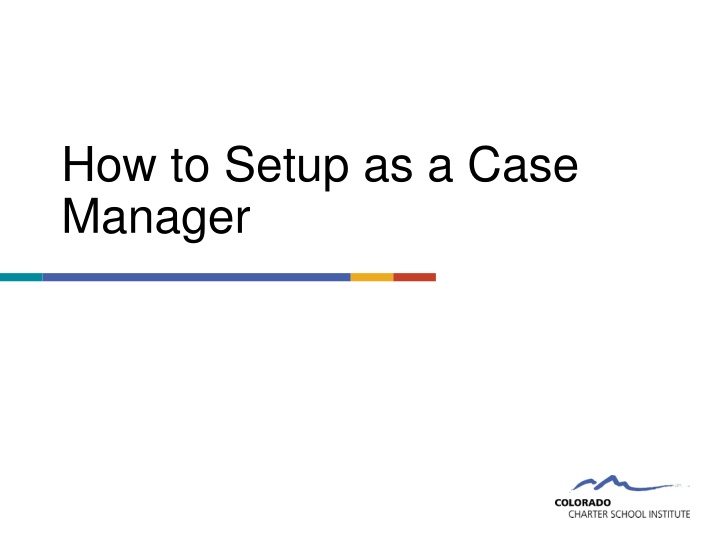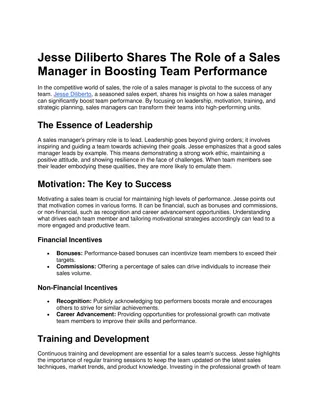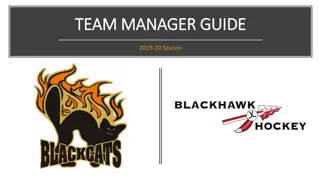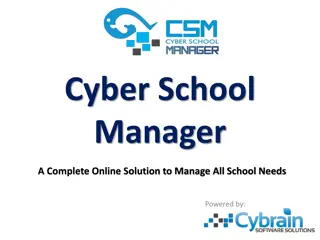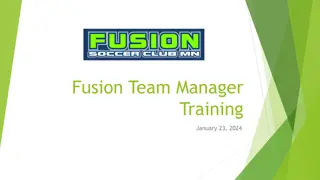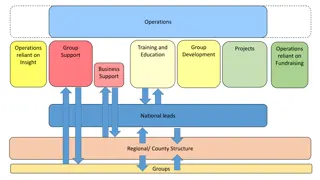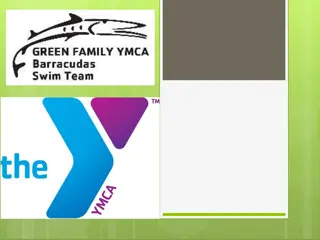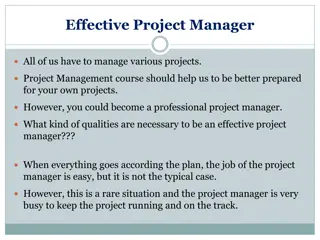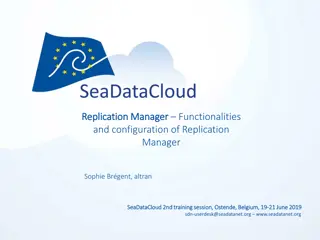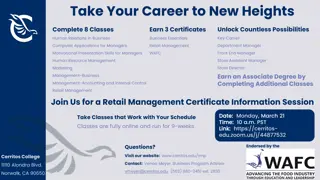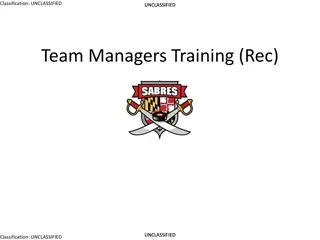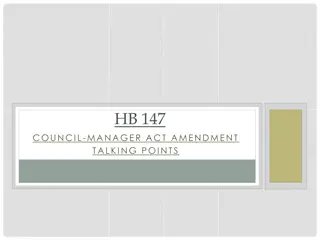Setting Up as a Case Manager - Essential Steps
Prepare for your role as a case manager by reviewing student information, organizing IEP documentation, developing a master calendar, setting up classroom spaces, and planning curriculum and instruction in alignment with IEP goals.
Download Presentation

Please find below an Image/Link to download the presentation.
The content on the website is provided AS IS for your information and personal use only. It may not be sold, licensed, or shared on other websites without obtaining consent from the author.If you encounter any issues during the download, it is possible that the publisher has removed the file from their server.
You are allowed to download the files provided on this website for personal or commercial use, subject to the condition that they are used lawfully. All files are the property of their respective owners.
The content on the website is provided AS IS for your information and personal use only. It may not be sold, licensed, or shared on other websites without obtaining consent from the author.
E N D
Presentation Transcript
How to Setup as a Case Manager
Objectives: HELP PREPARE CASE MANAGERS TO SET UP THEIR YEAR STRATEGIES OR IDEAS TO TAKE BACK
1. Review Student Information Review Familiarize Be Review IEPs: Student Files: Health and Safety: IEP Meetings: Thoroughly review the Individualized Education Programs (IEPs) for each student, noting goals, accommodation s, modifications, and services. Familiarize yourself with each student s educational history, evaluations, and behavior plans. (Hard files with original signatures) Review all dates for the year. Note annuals and re-evals (*initials). Create a list, note in your calendar, count backward for consent-re- evals Be aware of any medical or safety issues that might affect students in your care.
2. Organize IEP Documentation IEP Binder or Digital Folder: Create a binder, folder or digital folder for each student s IEP, including all relevant documents, progress reports, and notes. Snapshot Sheets: Use or develop a quick reference sheet for each student summarizing their IEP goals, accommodations, and services. (Review and share with teachers AND again after updated IEP) Caseload spreadsheet: Create or update the Special education spreadsheet of all students. Service Documentation: Enrich, IC, other?
3. Develop a Master Calendar *Sped team /case manager IEP MEETINGS: PROGRESS REPORT DEADLINES: EVALUATION DATES: SCHEDULE/NOTE ALL IEP MEETINGS AT THE BEGINNING OF THE SCHOOL YEAR. WHEN SCHEDULED, SEND OUT CALENDAR INVITES TO ALL TEAM MEMBERS. *SEND REMINDERS NOTE THE DATES FOR INITIAL EVALUATIONS AND REEVALUATIONS TO ENSURE THEY ARE COMPLETED WITHIN THE REQUIRED TIMELINES. MARK ALL PROGRESS REPORT DEADLINES AND ENSURE DATA COLLECTION ALIGNS WITH THESE DATES.
4. Prepare Your Classroom/Space (And general education classroom) Do you have a classroom? Shared space? Push into classrooms? Organize Materials: Set up your classroom with the necessary materials, including visual aids, manipulatives, and assistive technology. Flexible Seating: Arrange seating to accommodate students needs, ensuring accessibility and minimizing distractions. (*Shared spaces) Create a Welcoming Environment: Decorate with student-friendly posters and labels to create an inviting atmosphere. (*Meeting space too)
5. Plan Curriculum and Instruction 1 2 3 Align with IEP Goals: Develop lesson plans that align with each student s IEP goals and objectives. (Progress Monitoring-consistently assess) Differentiated Instruction: Plan for differentiated instruction to meet diverse learning needs and styles Behavior Management: Establish clear classroom rules and routines. Prepare positive behavior supports and interventions
5. Develop a Schedule Service Delivery: Plan for direct and indirect services. Be aware of inside/outside the classroom Create a schedule that includes time for everything Coordinate with related service providers Report Writing: Plan for writing IEPs/Evaluations Planning: Planning time for co-teaching, group sessions Progress Monitoring: Build into your schedule. Service Documentation: Build into your schedule Collaboration Time: Plan for time with general education teachers/special education team Other: Evaluations, observations, etc.
6. Communication Plan Parent Communication: Establish a system for regular communication with parents, such as weekly newsletters, emails, or a communication log. (Reach out and introduce yourself/reconnect). Classroom teachers: Establish a system for regular communication with teachers to check in/support. (Accommodations-classroom/testing). Meet to share/review snapshots/ongoing communication. Team Collaboration: Schedule regular meetings with the special education team and related service providers to discuss student progress and needs. Documentation: Keep detailed records of all communications and meetings.
7. Assessments and Data Collection Progress Monitoring: Set up a system for ongoing progress monitoring and data collection to track student growth and adjust instruction as needed. Evaluations: Formal and informal. Review what assessments are available. Are you trained to give them? Baseline Assessments: Conduct initial assessments to establish baseline data for each student. Regular Data Review: Plan regular intervals to review and analyze data to inform instruction and interventions. (hold meetings if need be!) Accommodations: Testing/Classroom: How to ensure students are receiving them? *Accommodations spreadsheet
8. Create Efficient Systems *Check in with team coordinator 1 2 3 IEP Templates: Develop templates for IEP present levels and/or Evaluation format (sections) Meeting agendas: Create an IEP/evaluation meeting agenda. Checklist/Spreadsheets: Create a checklist for onboarding new students, meeting paperwork, caseload information, accommodations for teachers/testing
Case Manager Checklist for IEP Meetings Annual Reevaluation/TRI Initial
9. Organize/Gather Resources, Materials and Supports Assistive Technology: Ensure all assistive technology and adaptive equipment are set up and working properly, and that you are familiar with how to use it Instructional Materials: Gather and organize instructional materials, including adapted books, educational software, and other resources.
10. Professional Development/Self Care Training: Attend professional development sessions on special education topics, instructional strategies, and behavior management. Stay Informed: Keep up-to-date with the latest research, best practices, and legal requirements in special education. Self-Care Plan: Develop a self-care plan to manage stress and maintain a healthy work-life balance.
Resources Checklist of PowerPoint CDE Procedural Guidance CSI Special Education Resource Site
Things for Special Education Teams to think about How do we ensure gen ed teachers know about and understand how to implement accommodations? How do we ensure students receive testing accommodations (i-Ready, MAPs, ACCESS, CMAS, PSAT, etc.) Think about school-wide training around Special Education. What can your Special Education support with? How often does your sped team meet/communicate?
